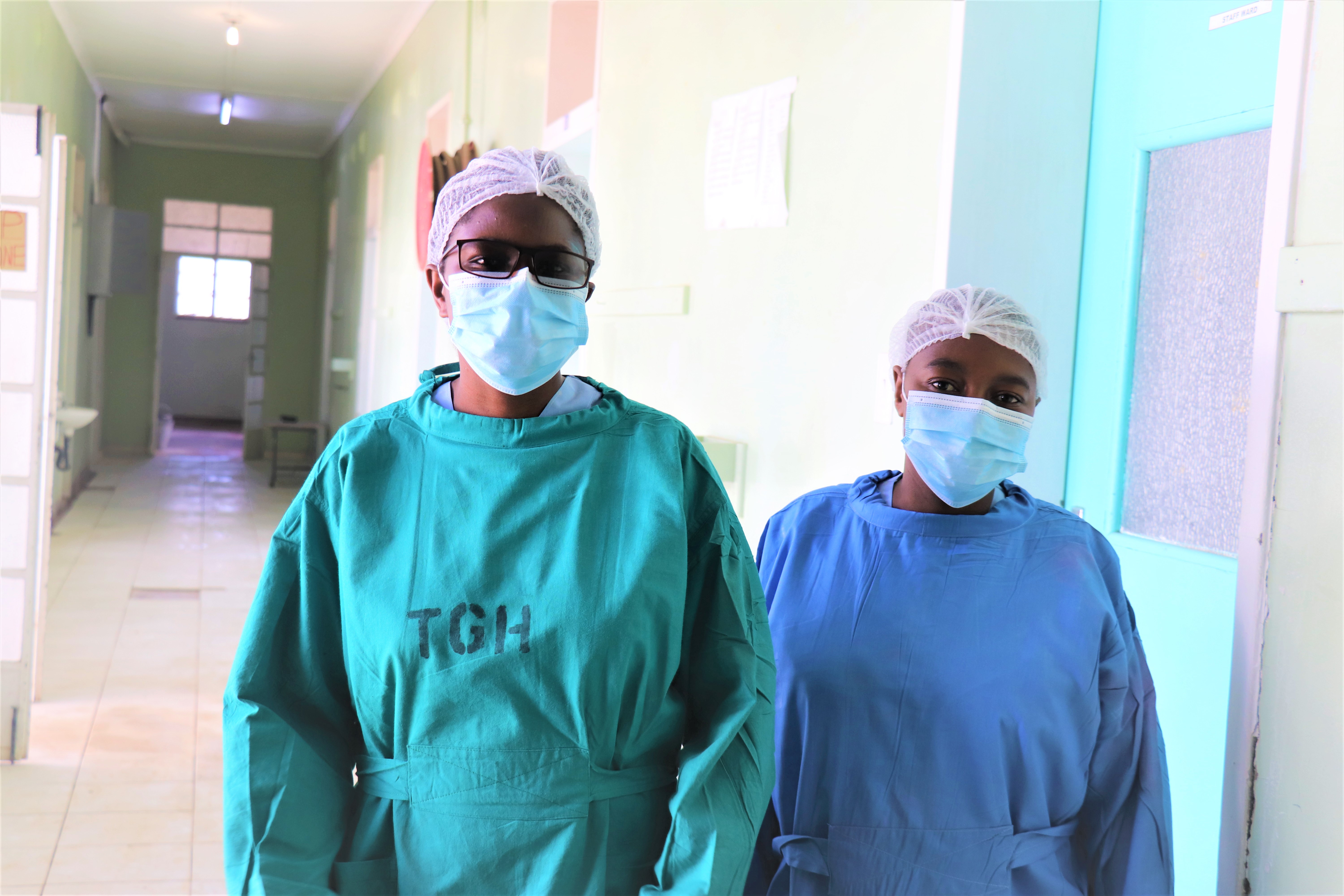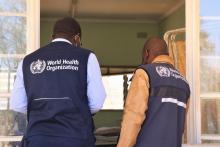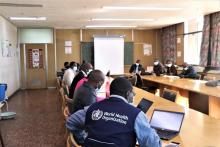Frontline Health Workers follow WHO IPC guidelines as they provide care for Covid-19 patients

By Tatenda Chimbwanda
Bulawayo, Zimbabwe - The first day Princess Zengeya and Vongai Mafunga, where seconded as COVID-19 front liner care givers, they were extremely frightened about their safety, recalls Nomazulu Dlodlo, Nurse in charge at Thorngrove Hospital in Bulawayo. With the increased infection rate of COVID-19 frontline workers in Bulawayo, Princess and Vongai were not sure if they could conduct their duties without exposing themselves to the virus.
A week into their duties as primary care givers of COVID-19 positive patients in isolation with moderate symptoms such as dry coughs. Princess and Vongai received a three-day comprehensive training for front line workers. The exercise focused on issues such as use of Personal Protective Equipment (PPE); management of waste produced during the care of patients; hand and respiratory hygiene. Including contact and droplet precautions as stipulated by WHO’s Infectious Prevention Control (IPC) guidelines for health care workers when providing care for COVID-19 patients.
Although Princess and Vongai were scared at first, receiving training was extremely empowering to them. It provided them with a practical lesson on donning and doffing amongst many things. Describing her initial experience as a COVID-l9 frontline worker, Princess says she was extremely anxious. “I won’t lie l was extremely nervous. l was just seconded here without any knowledge or training on caring for COVID-19 patients,” says Princess.
Because of the training, she learnt that donning is the process of putting on PPE while doffing is the procedure of removing it. Learning about the best IPC measures for Princess was extremely important. “Now I know how to handle a patient with COVID-19 and how to protect myself. I am also aware of WHO donning and doffing guidelines which l follow everyday as l look after the COVID-19 patients,” explains Princess.
The two COVID-19 frontline workers say they both learnt of the proper use of appropriate PPE such as medical mask, eye protection (googles) or facial protection (face shield) to avoid contamination, clean, nonsterile, long-sleeved gown, and medical gloves. The frontline workers were also educated on the hand hygiene they should follow before putting on and after removing PPE.
Princess further narrates the kind of care she provides to the patients in the isolation room. “The patients’ l look after are brave and inspire me. They communicate well, and tell me how they feel. l regularly check-up on them after a few hours. I am always there when they need me and just offer them with emotional support as well. I assist some of them with bathing, feed them as well as clean their rooms,” Princess reveals.
Despite the growing myth and stigma within their community of health care workers spreading COVID-19 in Bulawayo, Vongai has remained resolute.
“People run away from us all the time even public transport drivers leave us behind because of fear of being infected,” notes Vongai.
Princess and Vongai started working at Margret Hospital at the same time. They both had similar fears on what to do when providing care to COVID-19 patients. By the time of writing, Thorngrove Hospital had admitted twenty-three COVID-19 patients. Princess and Vongai are currently looking after one patient and are practicing what they have learned.
“Doffing is a critical part because that is when l am contaminated. Therefore, following the right IPC measures as recommended by WHO is extremely important in protecting myself and those around me,” says Vongai. Thus, the exercise taught Princess and Vongai how the correct use of PPE reduces exposure to COVID-19.
The training also taught Vongai of the critical elements- which an isolation room or ward should have. As well as the symptoms to look out for when caring for patients with moderate symptoms. Moreover, the exercise showed her what to do if their conditions become critical.
“For instance, l learnt that l should always observe patients all the time and check if they can breathe normally,” adds Vongai.
The Ministry of Health and Child Care (MoHCC) facilitated the training at Montgomery Gardens with all new front liners care givers at Thorngrove Hospital. The material used during the training was steered by WHO IPC guidelines. Thanks to the generous funding from Department for International Development (DFID). WHO has been able to offer technical support to MoHCC in translating national guidance on IPC into practices by frontline health workers through training, mentoring and supportive supervision.
Thorngrove Hospital was one of the health facilities WHO visited during their two weeks support visit to the City of Bulawayo’s COVID-19 response. WHO also visited Ekusileni Medical Centre and Mpilo Hospital. WHO’s visit was necessitated by the drastic increase in COVID-19 cases in Bulawayo. With the second highest number of Covid-19 positive cases currently standing at 1274 as of 31 August 2020. Throughout the visit, WHO took time to identify areas they will support to strengthen Bulawayo’s COVID-19 response efforts further. Moreover, WHO continues to work very closely with technical partners supporting the COVID-19 response pillars in Zimbabwe including NGOs, professional associations and other UN agencies.
Communications Officer
Tel: + 263 914 31408
Email: juliasw [at] who.int





